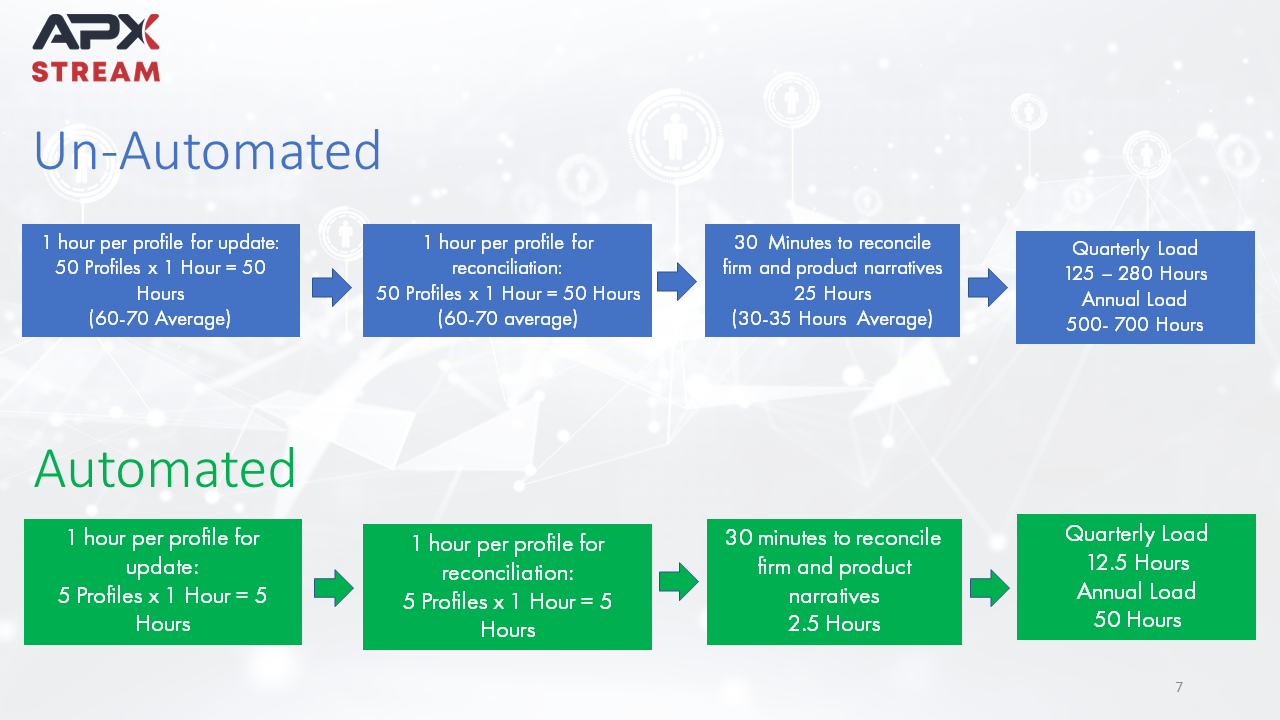
How do gatekeepers utilize data? The same way managers do – it’s all about the search and assess process.
Whereas investment managers look to metrics such as growth rates, financial ratios, profitability, and a company’s balance sheet, consultants and other database subscribers look at the data that results from a manager’s operations to guide their search.
More and more, that process is taking place electronically: on line and in the investment databases.
Using investment databases, consultants and other subscribers begin with a large universe of managers. Using screens and analytical tools, they whittle that universe down to a short list of potential candidates – it is very similar to the process managers use to create their watch lists and buy lists.
What are some of the datasets subscribers use to conduct initial, top-level screens of candidate firms? A non-exhaustive list includes:
- Asset class
- Basic strategy
- Style Box
- AUM
- Track record
- Geographical focus
- Benchmark
- Standard deviation of returns
- Alpha
- Beta
- Upside/Downside capture
Ensuring the veracity of these basic datapoints should be a top-level priority for investment managers. Unfortunately, it often isn’t, which make this an important compliance issue.
Why Automation is Vital for Effective Investment Data Compliance
One of the main reasons why investment data in the databases cannot always be trusted is because firms often do not take the time to properly reconcile the data after it has been published.
And there’s a very good reason why: many firms simply do not have the resources to do so. This graphic illustrates the conundrum quite nicely:

These numbers aren’t estimates -they are the real-world experiences of APX Stream clients before and after they automated their investment data management process.
The key takeaway: for a small-midsize firm with 5 products in 10 databases (50 profiles), automaton cuts the data assembly, warehousing, reconciliation, and distribution process by upwards of 90%:
- Absent automation, a firm’s data liaison (who typically has several marketing or ops-related responsibilities) can count on spending 70 hours (or nearly 2 weeks) manually populating the databases.
- If a firm takes its data marketing strategy seriously, the liaison can then be expected to spend another 2 weeks reconciling that data to ensure it is correct, with additional time checking the narratives to ensure they are relevant and reflect the firm’s current position.
- And because effective reconciliation requires additional “fresh eyes” to catch errors, can our hypothetical firm afford to dedicate yet another employee to conduct another round of reconciliation?
For the vast majority of firms, the answer is no – they would simply rather live with the mistakes and catch them as the quarter (or year. Or years) progresses, or as they are pointed out by database subscribers.
Why “Living with the Mistake” is Not an Option
The problem is that the SEC, in its recent announcement of enhancements to its advertising regulations, takes clear aim at any “communications disseminated ‘to obtain or retain’ investors.” Accordingly,
“…[W]e believe it is appropriate to regulate the use of such communications as a means reasonably designed to prevent fraudulent, deceptive, or misleading acts, practices, or courses of business.”
A careful reading of the proposed enhancements, coupled with important anecdotal evidence, strongly suggests that the SEC would consider data published to the industry databases as “advertising;” after all, why are you publishing data? Clearly, it is to attract clients.
So, investment data is advertising. And un-reconciled data that is incorrect, and thus misleading, clearly runs afoul of the SEC’s new regulatory enhancements.
Investment management firms cannot be comfortable with a laissez-faire attitude towards their data management and distribution.
How Gatekeepers Use Investment Databases
As we noted above, consultants and other gatekeepers use investment databases to screen and identify potential investment managers. Investment consultants and similar database subscribers use the databases to narrow their search from a large universe of managers to a more narrow, manageable watchlist upon which they conduct further screens on to come up with a finals list.
Beyond the basics, database subscribers use the database profiles extensively.
Yes, a manager’s track record is vitally important, but when a group of managers all have similar performance and portfolio characteristics, database subscribers use the narrative datasets to ruthlessly cull their lists to a manageable size.
Questions surrounding items such as investment process, approach, and staffing changes are all examples of where a firm can provide helpful insights and make a good faith effort to gain trust…or not.
In fact, there is broad variation in the quality of narrative data in the databases, which is often seen by database subscribers as indicative of how seriously a firm takes its data strategy.
Entries in areas such as Investment Process range from simplistic (“Buy low, sell high”) to dense walls of words, filled with jargon and gobbledygook that makes efficient assessment of a firm’s strategy difficult.
Watch The Recording: Investment Data COmpliance: An Evoling Standard
Establishing Differentiation
Most investment management firms believe their approach is differentiated – they just need someone to really listen and give them a chance.
Fair enough.
If this is a firm’s belief, then they must make an effort to tell their story quickly, clearly, concisely, when provided the opportunity. And database profiles are the key to gaining access to the gatekeepers who make those important initial decisions.
Database subscribers, once they have all their initial concerns addressed (returns, volatility, performance relative to benchmark, alpha, beta, etc.), want to know what makes a manager different. This includes a meaningful degree of self-awareness and reflection as a manager.
For example, acknowledgements of what a firm has learned and how those lessons have influenced their approach going forward is critically important to database subscribers when assessing the relative value-add between manager with similar quantitative profiles.
Another important point would be to highlight the relative strengths of both your investing team and members of the firm, writ large. Why is your team (and by extension your process for selecting your team) a value-add for the client?
Every manager would love to tout hundreds (or thousands) of basis points of alpha in their long-term track record. But that’s not real life, in most cases. So firms need to focus on their narratives; specifically why they should be trusted with the assets in their care, particularly in a world where there’s a stronger and stronger push towards passive management.
But know that investment data integrity is the most important issue to database subscribers.
If your data is corrupt, inaccurate, incomplete, or just plain unpersuasive, the databases, as a marketing tool, will underperform its potential.
Investment Data Automation as a Compliance Issue
For all the reasons we have noted here, investment data integrity has always been a closet compliance issue. But with the emerging SEC guidance, investment data compliance is moving to the head of the line.
As the investment databases become increasingly important in the due diligence process, and the use of a firm’s data contained therein becomes more important to the investment decision, the SEC and other regulators will quickly adjust their focus to data delivery and automation.
Industry regulators have always focused on marketing, advertising, and how firms interact with their potential clients. The “misleading” or inaccurate information violation is easy to achieve when data is unreconciled or improperly managed and maintained.
Now, the SEC has opened the door of subjectivity when it comes to marketing and advertising data. This subjectivity will most likely come down to the regulator’s interpretation and review of your firm’s data.
As such, this is the appropriate time to integrate compliance and automation to the investment data workflow, ensuring you have adequate policies and review procedures over the data you are “advertising.”
In the End…
nvestment management firms need to place a much stronger institutional emphasis on both data reconciliation and ensuring that the qualitative elements of their database profiles substantiate the quantitative, and vice versa.
The investment management industry is growing ever more competitive. The firms that will be positioned to grow at above-industry rates will be those that capitalize on existing automation technologies to streamline their data assembly, warehousing, and distribution process.
The end goal is to ensure investment management firms have sufficient resources to reconcile their quantitative data, and hone the persuasiveness of their qualitative narratives.
Watch The Recording: Investment Data COmpliance: An Evoling Standard